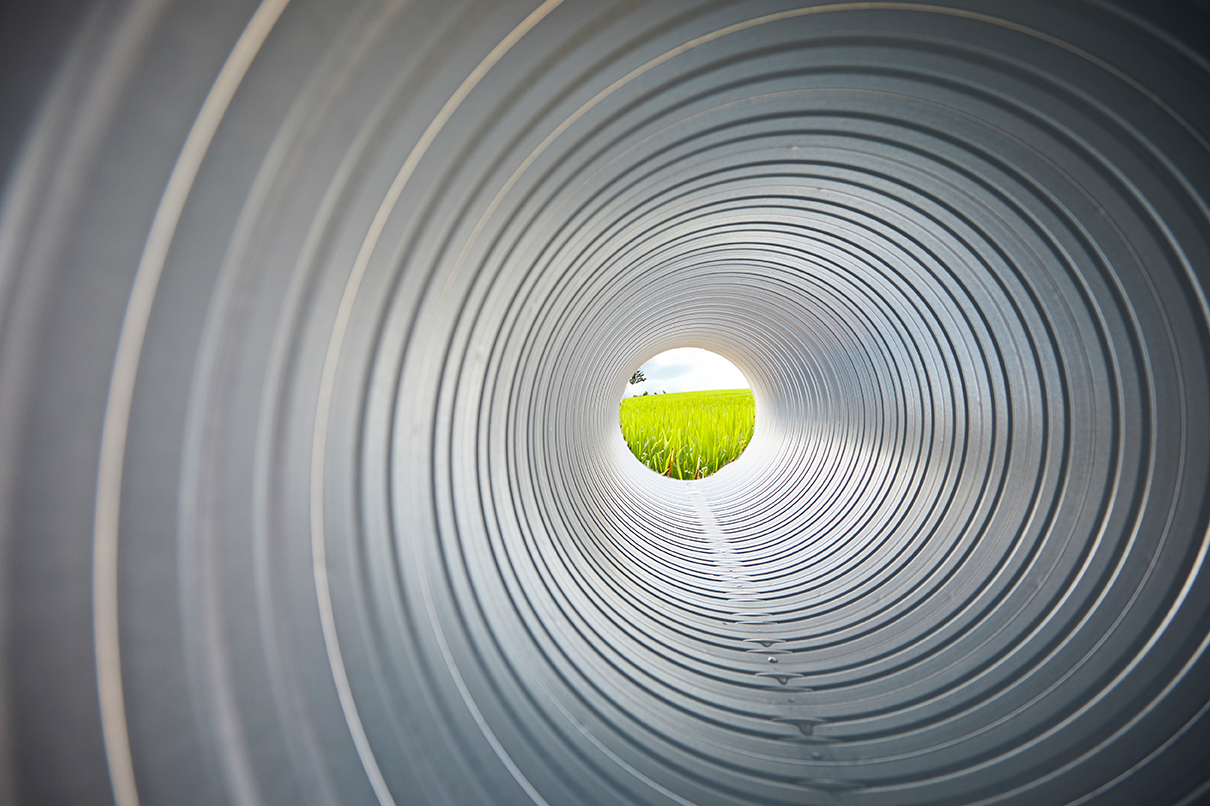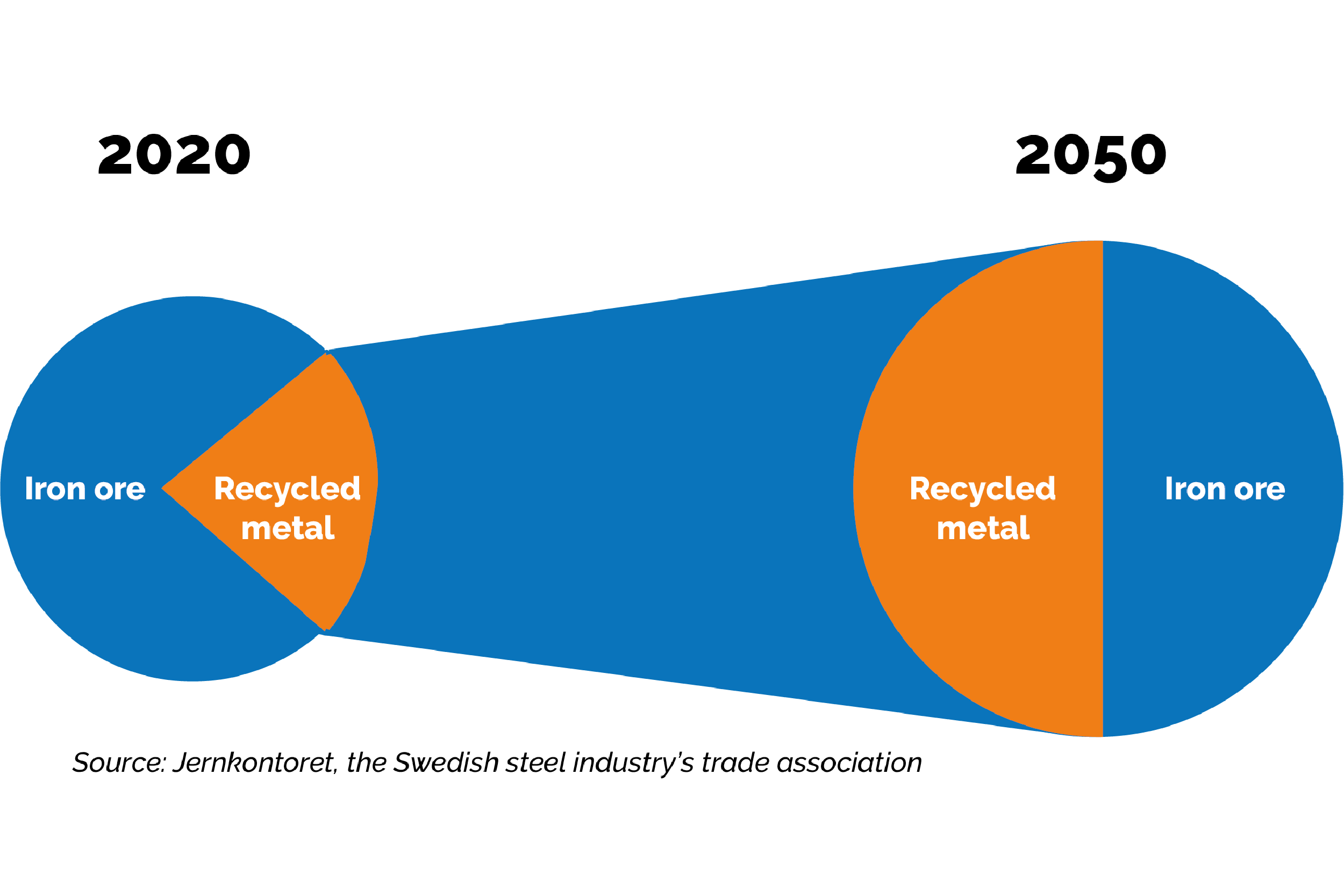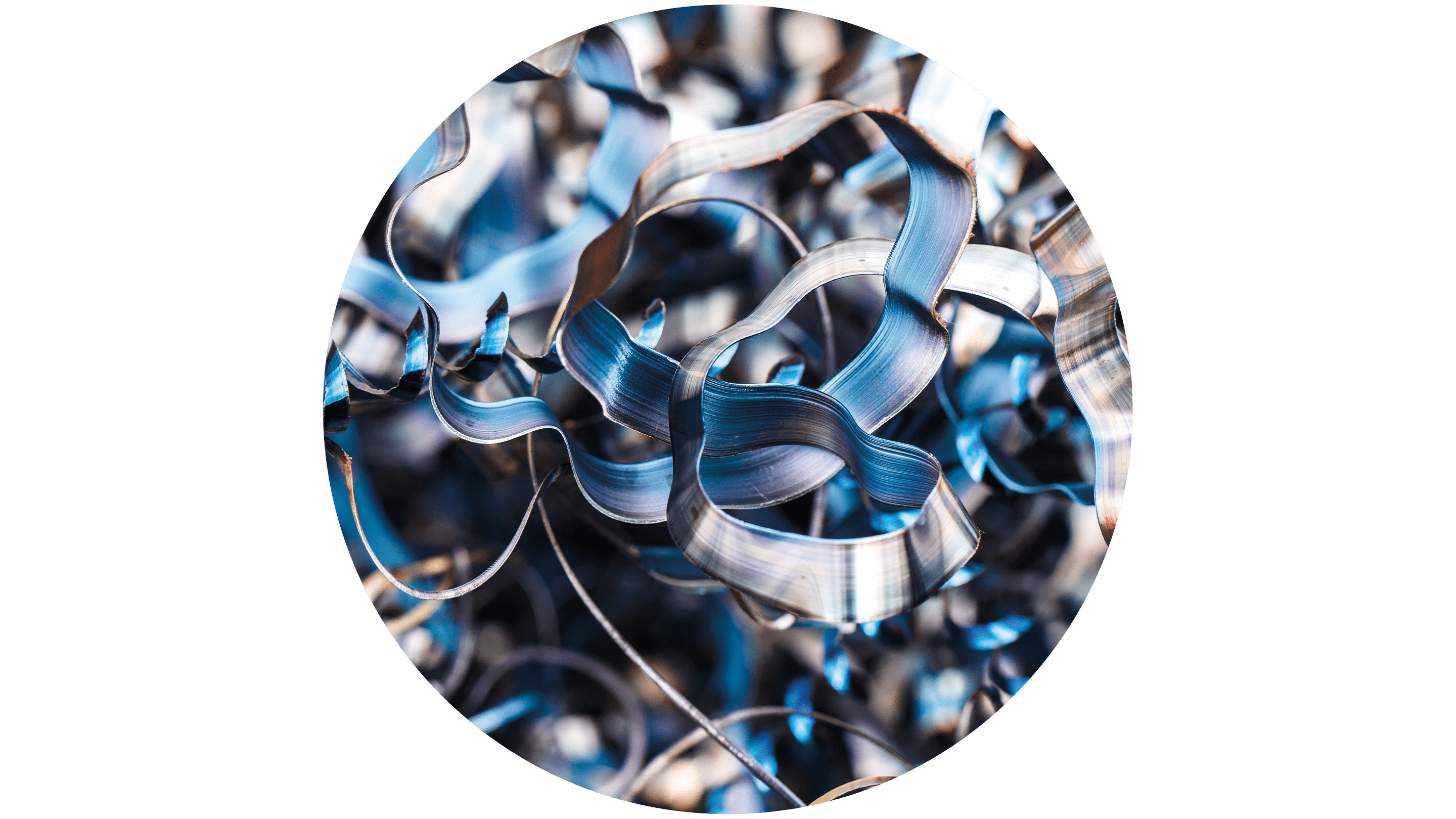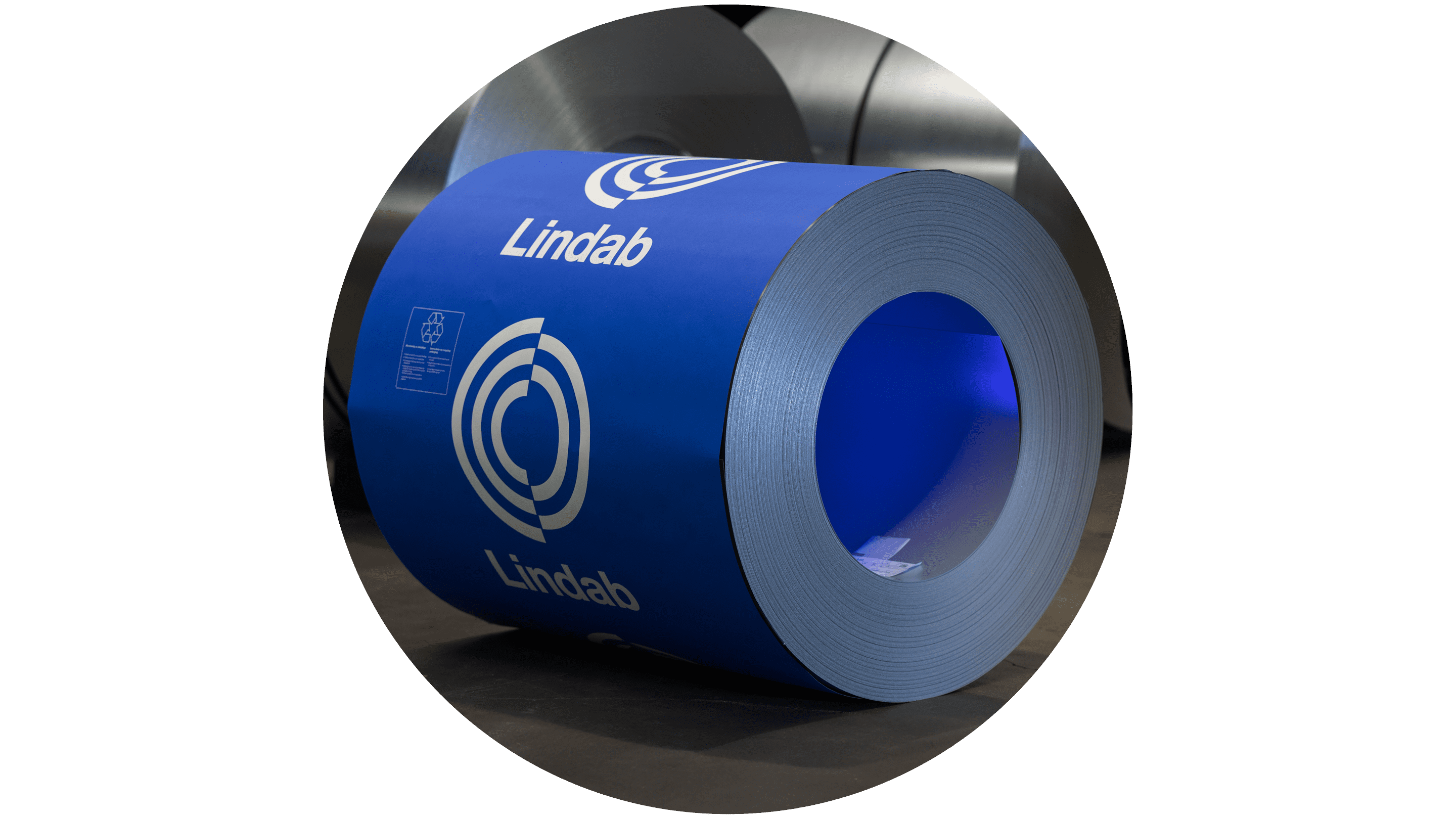Decarbonised steel
Decarbonised steel is the collective name that we at Lindab use for steel that is produced with a lower CO₂ footprint than traditionally produced steel. In the concept of decarbonised steel, there are different subgroups in the form of Recycled steel and Near-zero steel.
Approximately 80-95 percent of Lindab's products' environmental impact and around 50 percent of Lindab's total emissions come from steel. It is a material with many advantages, it has a long life, it does not catch fire and it can be recycled again and again. Lindab wants to be part of the sustainable transition within the steel industry and with new innovative technology we can together with our suppliers offer steel products with significantly lower emissions.
With decarbonised steel, the product properties are unchanged, a ventilation duct is still a ventilation duct, it is only the raw material that changes and produces a significantly lower environmental impact.
Read our two blogposts on decarbonised steel, the first one is found here.
Reduced CO₂ emissions through new technologies
Steel - a circular material
- Has a long lifespan
- Can be recycled again and again without loss of quality
- Can be manufactured with recycled resources
Recyclability is an important part of the circular transition. Lindab therefore strives to increase the proportion of recycled content in our materials. With products made in decarbonised steel, we get sustainable products with minimal climate impact.
Our way towards products with eliminated emissions

The future of steel
- World steel production will increase to around 2,500 million tonnes in 2050, from 1,950 million tonnes in 2021.
- 50% of the steel needed is expected to come from scrap by 2050.
- Iron ore-based is needed to be able to supply certain types of steel that cannot yet be produced from recycled steel.
Recycled steel 75
Recycled steel 75 produces approximately 60–65 percent lower CO₂ emissions than traditionally manufactured steel and consists of at least 75 percent recycled steel, with the same high-quality standards and properties. The steel is produced in electric arc furnaces powered by renewable electricity. In other words: the same performance, durability and guarantees but with a whole lot less fossil used in the making.
Recyclability is an important part of the circular transition. Lindab therefore strives to increase the proportion of recycled content in our materials.
EPD:s are available.

Savings example: Recycled steel 75
In new buildings, installation materials can account for 10-30 percent of the total climate impact. For renovations, the figure rises to 50-80 percent. In both scenarios, the ventilation system alone contributes to around 40 percent. In the ventilation system the ducts system account for 50 percent. With circular and rectangular ducts made of recycled steel 75, you can reduce this climate impact by 60-65 percent compared to traditional steel. Traditional steel is made from Basic Oxygen Steelmaking which includes using a blast furnace
Example: For circular duct dimension 125 mm, this means a saving of 2.44 kg CO₂e/m (this refers to Global Warming Potential fossil).
Near-zero steel
One example is SSAB and their fossil-free steel. The steel is produced with the HYBRIT process, which means that hydrogen is used instead of coal and coke. Renewable energy is used to extract hydrogen from water via electrolysis. With Hydrogen, coke and coal can be replaced in the refining process of iron ore and the bi-product from the process is now pure water, instead of large amounts of CO₂. The resulting product of the HYBRIT process is pure iron (sponge iron) which is then melted in an electric arc furnace. During the entire process, only electricity and fuels produced fossil-free are used - and the result is fossil-free steel with a significantly lower climate impact. This much-talked-about fossil-free steel from SSAB is planned for start of sales in 2026 at the earliest.
Another example is the near-zero steel SALCOS® from the Salzgitter Group. They are replacing the classic blast furnace route with production processes using direct reduction and electric arc furnaces. We also have a 7-year supply contract of near-zero steel from Stegra (previously H2 Green Steel) with deliveries planned to start in 2027, and a memorandum of understanding with Tata Steel Nederland for supplies of their Zeremis® near-zero steel once the IJmuiden steelworks transitions to hydrogen-based steel production.
Frequently asked questions





